The Soulknife is a subclass available to Rogues in Dungeons and Dragons 5e that was introduced in Tasha’s Cauldron of Everything.
The Rogue has always been known as an expert at stealth, infiltration, and surprise attacks. However, this sub-class takes it to a new level by giving them psionic powers that they can use to quickly take out their opponents!
In this guide we will cover everything you need to know about playing this exciting new subclass in D&D 5e!
What is the Soulknife Rogue in D&D 5e?
The Soulknife Rogue takes everything that is great about the Rogue class adds a bit of “razzle dazzle” to it.
Of course, “razzle dazzle” in this case means “freaking awesome psychic powers”!
Pulling from your pool of Psionic Energy dice, you can show off the impressive combination of quick-thinking and psionic powers. These dice fuel your abilities as a Soulknife, but we’ll talk about those in more detail when we go over the subclass’s abilities.
This Roguish Archetype first appeared in Tasha’s Cauldron of Everything alongside the Phantom as the two new subclass options for Rogues.
Role in the Party
The Soulknife’s role in the party is more or less exactly what one would expect from a Rogue: scrapping in combat to pump out Sneak Attack damage, dealing with traps or locks, and general infiltration.
This subclass’s psionic abilities effectively add extra bonuses and utility evenly across the Rogue’s skillset.
Okay, maybe that sounds a little boring when it’s put that way, but stay with me!
The Soulknife stands out not just because of its mechanics, but also its style. More than probably any of the other Rogue subclass’s (except possibly the Swashbuckler), the Soulknife is just begging for all kinds of cinematic flavor in your game!
Soulknife Rogue Abilities
Alright, so with all of the explanation taken care of, let’s get to talking about that “razzle dazzle” we mentioned earlier!
Because there are so many ways to use your swanky new Psionic abilities, you might feel a little overwhelmed at first. I’ll explain the abilities in more depth, but feel free to reach out in the comments if you still have questions or just want to say hi!
But, back to it! These are the Soulknife’s abilities in D&D 5e!
Psionic Power
At level 3, you gain the primary resource for your psionic abilities: your Psionic Energy dice.
The amount of Psionic Energy dice available to you is equal to double your proficiency bonus. As you level up, you’ll gain more of these (and they’ll get stronger too!)
| Soulknife Level | Number of Psionic Energy Dice | Psionic Energy Dice |
| 3 | 4 | d6 |
| 4 | 4 | d6 |
| 5 | 6 | d8 |
| 6 | 6 | d8 |
| 7 | 6 | d8 |
| 8 | 6 | d8 |
| 9 | 8 | d8 |
| 10 | 8 | d8 |
| 11 | 8 | d10 |
| 12 | 8 | d10 |
| 13 | 10 | d10 |
| 14 | 10 | d10 |
| 15 | 10 | d10 |
| 16 | 10 | d10 |
| 17+ | 12 | d12 |
At the end of a long rest, you regain all of your Psionic Energy dice. In a pinch, you can use a bonus action to regain one of these dice per short or long rest.
At this level, you have two abilities that you can spend Psionic Energy Dice on: Psi-Bolstered Knack and Psychic Whispers.
Psi-Bolstered Knack
Psi-Bolstered Knack is useful for situations where you fail an ability check using a skill or tool that you have proficiency with. You can roll one of your Psionic Energy dice and add that number to the check.
This allows you to possibly succeed when you would have otherwise failed. If you still fail the check, the dice is not expended! (So at least you don’t burn a resource!)
At later levels (9 and up), you’ll likely only use this ability on the absolute critical rolls. But in the early levels where a single trap can easily result in a total party kill, this is very valuable!
Psychic Whispers
Your second ability, Psychic Whispers, lets you telepathically communicate with others. You use an action, choose a number of creatures equal to your proficiency bonus, and roll a Psionic Energy die.
The number rolled on the die is how long you can send messages back and forth to each other telepathically.
Note that you must be able to see them when you activate this ability, must stay within 1 mile of each other, and they have to know at least one language.
So you could use this ability to communicate with your allies or to harass a goblin. But a creature like an Ooze, for example, that doesn’t speak a language can’t be communicated with.
Not sure why you want to talk to an Ooze, but hey I’m not judging…
The creature that you’re using this ability to communicate with can end the connection at any time they want without requiring an action. (Most guards, for example, will likely immediately end the connection.)
Additionally, your first use of this ability per day doesn’t cost you a Psionic Energy die!
Yup! Totally free!
This is very useful for coordinating with your party when doing reconnaissance or trying to time an ambush just right.
Psychic Blades
Your second level 3 ability, Psychic Blades, is the Soulknife’s bread-and-butter combat ability. Not only does this boost your combat performance, but it looks awesome too!
With this ability, you manifest a psychic blade from your free hand and attack with it when taking the Attack action.
This blade is a simple melee weapon and has the Finesse and Thrown properties. It has a range of 60 feet (with no long range ability) and deals psychic damage equal to 1d6 + your attack’s ability modifier. (In most cases, that’s going to be 1d6 + your DEX modifier!)
Additionally, the blade vanishes after your attack (whether it hits or misses) and doesn’t leave any marks on the target if it deals damage. (This makes it especially good if you’re trying to discreetly remove a threat and want to make it look natural.)
If your other hand is free and you’ve already attacked with your Psychic Blade, you can use a bonus action to summon another blade and attack again. This one is 1d4 plus your ability modifier though.
Now, with that said, I have some thoughts on this ability…
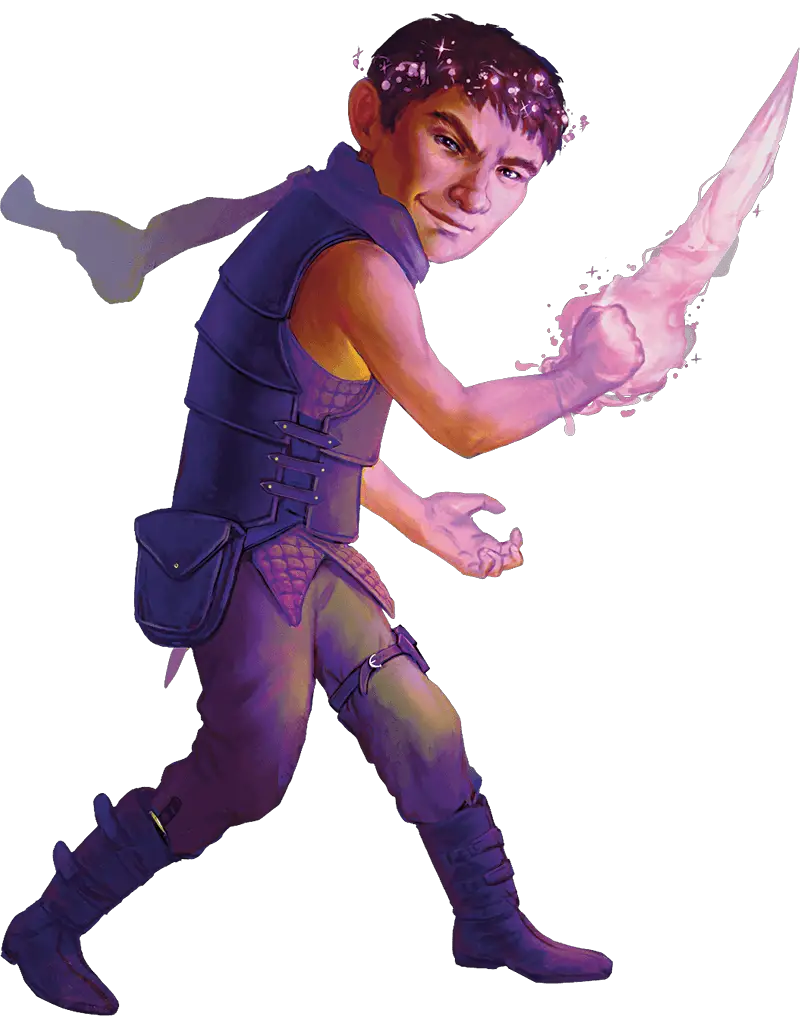
The Good and Bad of the Soulknife’s Psychic Blades
Let’s start with the good.
This ability lets you reliably put out psychic damage which very few creatures are resistant to.
1d6 + your ability score isn’t bad damage and the 60 feet range is very good. Furthermore, you’re never at risk of being unarmed since you can just summon the psychic blades as you attack!
Being able to summon a second blade with your bonus action is also very handy.
As a Rogue, you are going to deal most of your damage by looking for opportunities to use your Sneak Attack. Having a second attack by dual-wielding gives you yet another chance to deal your big damage.
That said, just be mindful of using your bonus action for this. In some situations, it might be better used for the Rogue’s Cunning Action ability if you need to duck back out of combat or reposition.
“So what’s bad about Psychic Blades?” you ask?
Well… It comes down to balance.
The only downside to this ability will come as your party levels up and you start to get magical weapons and items.
As your allies get weapons that give them bonuses to attack rolls and damage, your blades don’t really get any of that. In the early game, this isn’t a problem but as you get higher in level and the magical loot gets stronger, you’re likely to feel left out.
So do you just eventually stop using your Psychic Blades in favor of a magical weapon that actually gives you those swanky bonuses?
Personally, I’d recommend chatting with your DM as you get into the mid and late game levels. Homebrewing up some kind of magical pendant to help you better channel your psionic abilities (and buff your blades) should certainly be possible with some creativity.
Soul Blades
At level 9, you gain two more options for your Psionic Energy dice to buff your Psychic Blades.
And oh boy are these buffs just beautiful…
Homing Strikes
Homing Strikes lets you roll a Psionic Energy die and add the result to your attack roll if you would otherwise miss. If you still don’t hit, the Psionic Energy die is not expended.
But, honestly, you’re almost certainly going to hit unless you just happened to roll very unfortunately. Adding a d8 (later a d10 then a d12) to your attack can be a huge benefit, especially if you’re really counting on sticking that Sneak Attack.
This doesn’t necessarily balance out the problem with Psychic Blades that I pointed out earlier. After all, an enchanted weapon gives reliable attack bonuses without needing to use a resource. So while it doesn’t perfectly offset the enchantment problem, it’s definitely going to make a difference!
Psychic Teleportation
Psychic Teleportation is the second buff that the Soulknife gets at level 9.
With this ability, you use a bonus action to summon a psychic blade then expend one of your Psionic Energy dice. You now get to throw your blade to an unoccupied point that you can see up to a distance of the number rolled on your Psionic Energy die times 10. You instantly teleport to that point and the blade vanishes.
When you get this ability, you’re looking at a max range of 80 feet. Once you hit level 17, that becomes a max range of 120 feet.
This ability is cool and can certainly save your life in a wide variety of situations. Just be aware that the possibility of rolling a 1 is low… but never zero.
There is a chance that you may only be able to teleport 10 feet away. That can still be enough sometimes, but it’s certainly underwhelming.
In a pinch, this ability is great, but it’s incredibly variable and probably shouldn’t be something that you base your entire strategy around.
In any case, feel free to yell “yeet” or some other cry as you use this. It won’t give you any bonuses, but it might keep the Dice Gods appeased.
Psychic Veil
At level 13, the Soulknife gets the Psychic Veil ability. This might seem simple on the surface, but it’s honestly pretty crazy.
As an action, you and anything you’re wearing or carrying become invisible for up to an hour. It ends early if you dismiss the effect, force a creature to make a saving throw, or immediately after you deal damage to a creature.
The best part?
The first one’s free.
You get this once per long rest, but you can expend one of your Psionic Energy dice to use it again if you haven’t been able to rest yet.
Needless to say, being a Rogue that can turn invisible for an entire hour is pretty awesome. It won’t help you in combat beyond the first attack, but scouting just became effortless for you.
(Psst… Just be mindful of creatures with Truesight, Tremorsense, or the See Invisibility spell!)
Rend Mind
Finally, we come to the Soulknife’s capstone ability at level 17: Rend Mind.
If it sounds utterly devastating, that’s because it is!
When you use your Psychic Blades to deal Sneak Attack damage to a creature, you completely ravage their mind. That creature has to now make a Wisdom saving throw with a DC equal to 8 + your proficiency bonus + your DEX modifier. If they fail, they are stunned for 1 minute and repeat the saving throw at the end of each of their turns.
At this level, you’ve probably maxxed out your DEX score to 20 which gives you a +5 ability modifier. You should also have a +6 proficiency bonus. That means the save DC would be 19 which is pretty difficult to beat in most cases.
The “stunned” condition can quickly turn into a death sentence for many creatures. Not only can they not do anything, but attacks against them are at advantage.
They’ll be out of commission for at least one round with this ability, but it’s totally possible that they might keep failing their save and spend the entire combat getting punished or in “time out.”
This can only be used once per long rest unless you spend three Psionic Energy dice to use it again. However, with 12 dice in your pool at this point, that’s a small cost for such a devastating effect!
Just be wary about what kind of saves your target might be good at making. Spellcasters and creatures like genies, celestials, some giants, and devils tend to be pretty good with Wisdom saves.
That said, this is a very powerful buff to your Sneak Attack and a remarkable capstone ability!
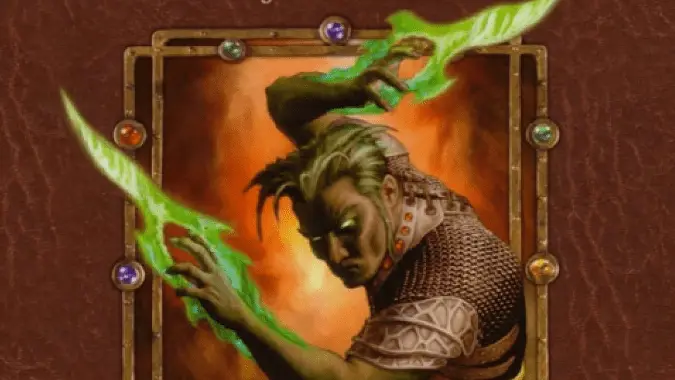
Connections
As with most Rogues (particularly Thieves or Assassins), the Soulknife could certainly find themselves connected to your game’s world by being a member of a Thieves’ Guild. Whether they’re a welcomed member or viewed with cautious suspicion for their powers is entirely up to you.
There are certainly plenty of other organizations, however, that would take an interest in the Soulknife’s peculiar abilities. They might work as a spy for the local government or contract with the Merchant’s Guild to keep an eye on certain debtors.
Though you might choose to make your Soulknife more like a monk who has honed their psychic abilities with the guidance of a monastic order similar to the Jedi from Star Wars.
So much of this class is based in their psychic abilities that you want to look at that as a major thread to tie your character into your game’s story. How do they feel about their powers? When have they been helpful? When have they hurt your character or otherwise been inconvenient?
Perhaps most importantly, how are they working to hone these powers and how does that motivate them to join the rest of the party?
Is the Soulknife Rogue Good?
I’m going to be honest, I don’t think I’ve read a single subclass in all of D&D as many times as I read over the Soulknife without forming a solid opinion.
On one hand, there’s so much about this class that I love. The flavor is fantastic with plenty of mechanical “oomph” to make it a viable pick.
On the other hand, the Soulknife is basically just taking the Rogue’s standard kit and adding that psionic “razzle dazzle” to it. Whereas other subclass options have clear specializations, this one is just a balanced upgrade across the board for the Rogue’s skills and role in the party.
That’s not a bad thing, but it’s weird to see a class that doesn’t fully carve out its own niche.
However, I think I was mostly a little jaded in my first (several) read-throughs of this class. When the Tasha’s Cauldron of Everything book was announced as having psionic classes, I think I envisioned something else. With time, I’ve come to really like this class though.
While you won’t be scheming sabotage like the Mastermind or mastering the wilds like the Scout, you’re a beast in combat while still being reliable when navigating dungeons, disarming traps, and infiltration.
So, yeah, I’d say the Soulknife is a very solid choice for a Rogue Archetype.
Of course, you can see how it ranks against the other subclass options in this other article!
The lower levels will be a bit difficult for you since you have such a small resource pool to start, but by the time you’re in the mid-game levels you’ll be ready to unleash psychic fury upon your foes!
If you’ve got a DM who’s willing to help you scale your Psychic Blades as you level, I’d say that this is one of the better subclass choices for your Rogue.
Conclusion – The Soulknife Rogue in D&D 5e
Well, that wraps up this guide to the Soulknife Rogue in D&D 5e!
You can find this subclass (and many others) in Tasha’s Cauldron of Everything on pages 63 – 65.
As always, let me know in the comments if you have any questions, suggestions, or just want to say hi!
And don’t forget to check out the Complete Guide to the Rogue in D&D 5e!
Don’t want to miss a single thing? Sign up for the Tabletop Joab newsletter to get updates on all the latest content!
Until next time!

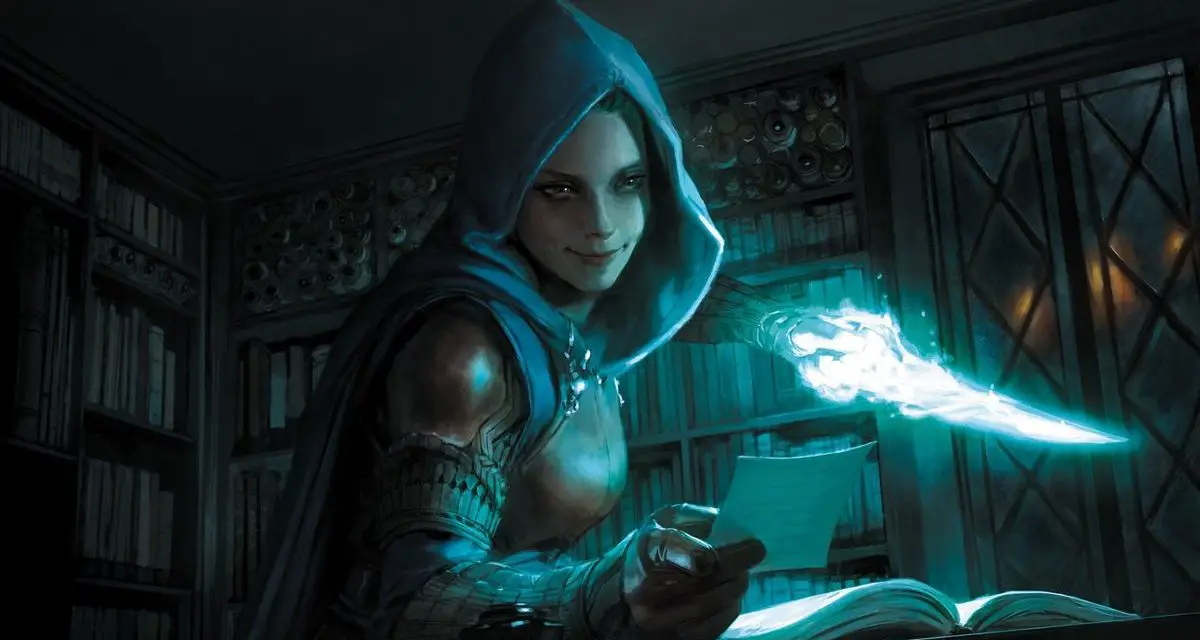

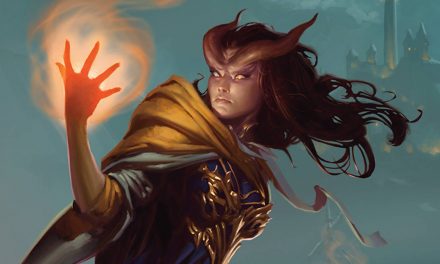

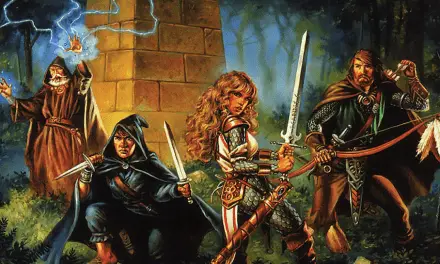
![Can Druids Wear Metal Armor? [Answered]](https://tabletopjoab.com/wp-content/uploads/2021/01/elf-druid-dungeons-and-dragons-440x264.jpg)


